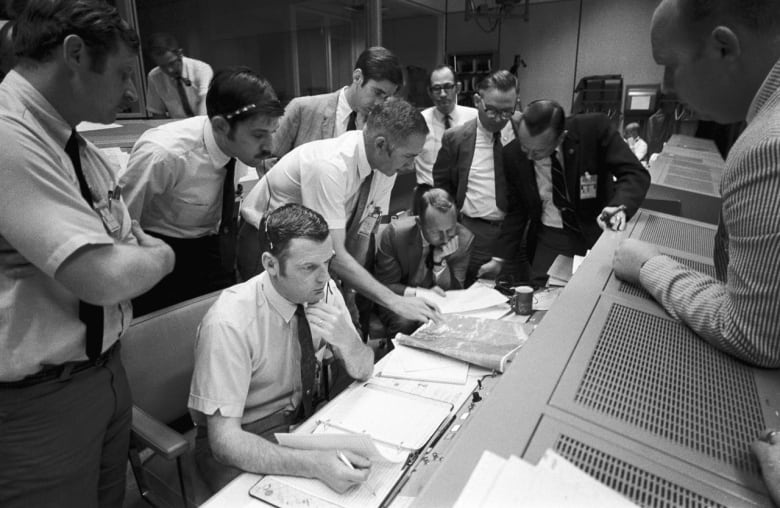Apollo 13 was a near-disaster that became a triumph — now you can experience it in real time
New website launched for the 50th anniversary of the heart-wrenching mission


Apollo 13 was the moon mission that could have ended in disaster — but, somehow, against all odds, didn't.
And now, to celebrate the 50th anniversary of that fateful flight, NASA has unveiled Apollo in Real Time, a website that allows people to relive the heart-wrenching experience as it unfolded.
"It is considered one of the most important achievements of the manned space program," said software engineer Ben Feist in an interview with Quirks & Quarks host Bob McDonald.
"[Apollo 13] solidified NASA's place in cultural history within the United States as the place where legends are made."

Feist is a Toronto-based software engineer who designed the website as a NASA contractor. He spent years working with a team to chronologically lay out over 7,300 hours of audio and video, as well as photos synchronized with the exact moment they were taken during the 150-hour mission.
'Houston, we've had a problem'
The mission's problems began almost 56 hours after launch, when astronaut Jim Lovell went to do one final task before tucking in for the night: stirring the cryogenic oxygen in the tanks that provide electricity through a fuel cell system.
When he did that, the tank exploded, and the astronauts hit the radio to call out the famous line: "Houston, we've had a problem."
"They didn't know what had happened. You can hear now for the first time the people in charge of the electrical systems in Mission Control talking amongst themselves ... they were saying what could this be?" said Feist.

"You get to hear how quickly they went from not knowing what was going on, whether it was an instrumentation problem, to within about 90 minutes actually scrubbing the lunar landing."
That's how, 330,000 kilometres from Earth, Lovell and fellow astronauts Fred Haise and John Swigert found themselves in a service module that was quickly leaking oxygen, electricity, and water.
After trying everything they could to remotely fix the problem, Mission Control instructed the crew to use the lunar lander as a lifeboat.
The lander was meant to take a crew of two to the moon for a few hours, but it now hosted the three astronauts for a mission well beyond what it was built for. It was cramped, it was cold, it lacked necessary supplies, but it kept the astronauts alive.
"It's pretty much recognized that the lunar lander saved the crew's lives," said Feist.
Feeling like failures, but landing as heroes
They had a lifeboat, but still needed to make it back to Earth. That's when Mission Control made the decision to slingshot the crew around the moon.
In doing that, the astronauts set a record for the farthest distance from Earth reached by humans.
"None of this had been planned out previously so they had to make some choices really quickly," said Feist.
"There were a hundred little smaller problems along the way. The kinds of things that if they hadn't figured it out would be just another way that this would have ended in disaster."
They were flawed individuals, but they were perfect in their moment when it counted, and they got the crew home.- Ben Feist
Ninety hours after the explosion, the exhausted crew made it back to Earth, splashing down in the South Pacific Ocean.
The three astronauts were surprised to be greeted as heroes.

"They were feeling sheepish about their mission not being a success and then not being able to land on the moon," said Feist.
"So they came home feeling like they had failed, and had no idea that the world had been captured by this drama. And they were landing as heroes about to be awarded the Medal of Freedom."
NASA still uses Apollo 13 as a triumph, calling the mission a "successful failure."
For Feist, it's an example of humanity coming together in a time of need.
"The average age of the people working on this stuff was very young. They were flawed individuals. They were human beings, but they were perfect in their moment when it counted, and they got the crew home," he said.
"And I think hopeful messages like this about us being capable if we all pull together is just the kind of thing that humanity could stand to have a little bit of right now in the current situation."
To relive the experience, go to www.apolloinrealtime.org.
Produced and written by Amanda Buckiewicz